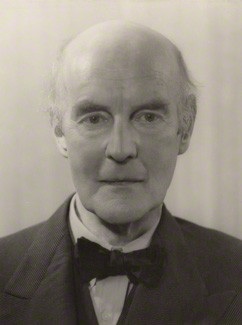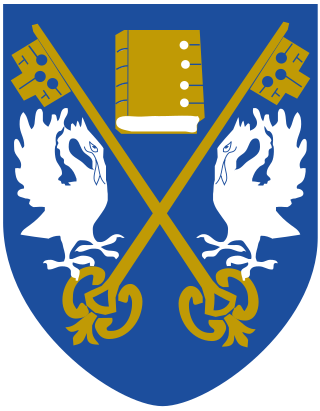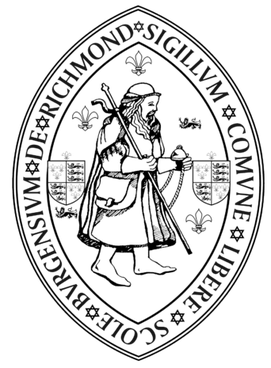
Lewes is the county town of East Sussex, England. The town is the administrative centre of the wider district of the same name and the location of East Sussex County Council at the county hall.

Priory School is a secondary school in Southsea, Hampshire, England. It is situated in the northern area of Southsea bordering Fratton, and lies close to Fratton railway station on the A2047. Stewart Vaughan is the Headteacher at the school. Priory school is an academy and part of the Bohunt Education Trust.

Sir Edward Brantwood Maufe, RA, FRIBA was an English architect and designer. He built private homes as well as commercial and institutional buildings, and is remembered chiefly for his work on places of worship and memorials. Perhaps his best known buildings are Guildford Cathedral and the Air Forces Memorial. He was a recipient of the Royal Gold Medal for architecture in 1944 and, in 1954, received a knighthood for services to the Imperial War Graves Commission, which he was associated with from 1943 until his death.
Ark Alexandra, previously known as Hastings Grammar School, William Parker School, William Parker Sports College, and later as Ark William Parker is a secondary school in Hastings, East Sussex in the United Kingdom. It was the only male single-sex secondary school in East Sussex and is now a co-educational Academy spread over two sites after Ark Helenswood Academy merged with Ark William Parker on 1 September 2019.

Brighton College is an independent, co-educational boarding and day public school for boys and girls aged 3 to 18 in Brighton, England. The school has three sites: Brighton College, Brighton College Preparatory School and the Pre-Prep School.

East Sussex College or East Sussex College Group is the largest higher education college in East Sussex, providing education and training from foundation to degree level. The college educates almost half of the county's young people and over 8,000 adults each year at campuses in Lewes, Eastbourne, Hastings and Newhaven, and in the workplace.

King Henry VIII 3-19 School Abergavenny is an English-language comprehensive school situated in the town of Abergavenny, in the county of Monmouthshire, Wales.
Chailey Secondary School opened in April 1958, is a comprehensive secondary school located in the village of South Chailey, Chailey, just outside Lewes in East Sussex, UK. Chailey School was awarded specialist Language College Status in July 2002. In the year 2007, the school was also awarded Humanities College status. The school also provides adult classes in French, Italian, and Spanish. It does not have a sixth form.

Richmond School & Sixth Form College, often referred to simply as Richmond School, is a coeducational secondary school located in North Yorkshire, England. It was created by the merger of three schools, the oldest of which, Richmond Grammar School, is of such antiquity that its exact founding date is unknown. The first mentions of it in writings, however, is estimated, to be between 1361 and 1474. It was officially ratified as an educational establishment in 1568 by Elizabeth I.

Derby School was a school in Derby in the English Midlands from 1160 to 1989. It had an almost continuous history of education of over eight centuries. For most of that time it was a grammar school for boys. The school became co-educational and comprehensive in 1972 and was closed in 1989. In 1994 a new independent school called Derby Grammar School for boys was founded.

King's Academy Ringmer is an academy school and a specialist technology college. It is located in the village of Ringmer, East Sussex, England. The school was opened in 1958 and serves a catchment area of Lewes and surrounding towns and villages.
King Edward VI School, Lichfield, is a co-educational secondary school and sixth form located near the heart of the city of Lichfield, Staffordshire, England. It is a community school maintained by Staffordshire Education Authority and admits pupils from the age of 11, with most electing to continue their education into the sixth form, leaving at 18. In the main school, the published admissions number is 250 pupils for each year group. In total there are in excess of 1600 pupils on roll.

Lewes Priory is a part-demolished medieval Cluniac priory in Lewes, East Sussex in the United Kingdom. The ruins have been designated a Grade I listed building.
The Hastings Academy, formerly known as Hillcrest, is a secondary school in Hastings, East Sussex, England. The Hastings Academy opened on 1 September 2011 moving into a new building during February 2013. The school has around 900 students and over 100 staff. The Principal is Mr Simon Addison. It is run by the University of Brighton Academies Trust.
Falmer High School was a community mixed-sex non-denominational comprehensive school for pupils aged 11 to 16 in Brighton, East Sussex, England. It closed on 31 August 2010 and was replaced by Brighton Aldridge Community Academy on the same site, sponsored by Rod Aldridge.
Southover Manor School was a private boarding school for girls at Lewes, East Sussex, with a preparatory department.

Longhill High School is a co-educational secondary school for 11 to 16 year-olds, which is located in Rottingdean, Brighton and Hove, East Sussex.
Central Technology & Sports College was a secondary school in the north of Grantham in Lincolnshire, England. It became part of The Priory Ruskin Academy in 2010.
Carisbrooke College is a foundation trust-supported secondary school in Carisbrooke on the Isle of Wight, formerly Carisbrooke High School. Sixth form students are based at the Island Innovation sixth form Campus, in Newport, a shared sixth form with Medina College.

King James I Academy is a medium size academy school and sixth form centre for mixed gender aged 11–18 in the town of Bishop Auckland in County Durham in northeast England. It traces its history to the early 17th century. The site currently consists of two large two-storey buildings as well as a few small cabins, including the "Kings Feast" which is used to sell food at breaks, lunches and special occasions. The others are used as classrooms or form rooms similar to the rooms inside the other buildings.













